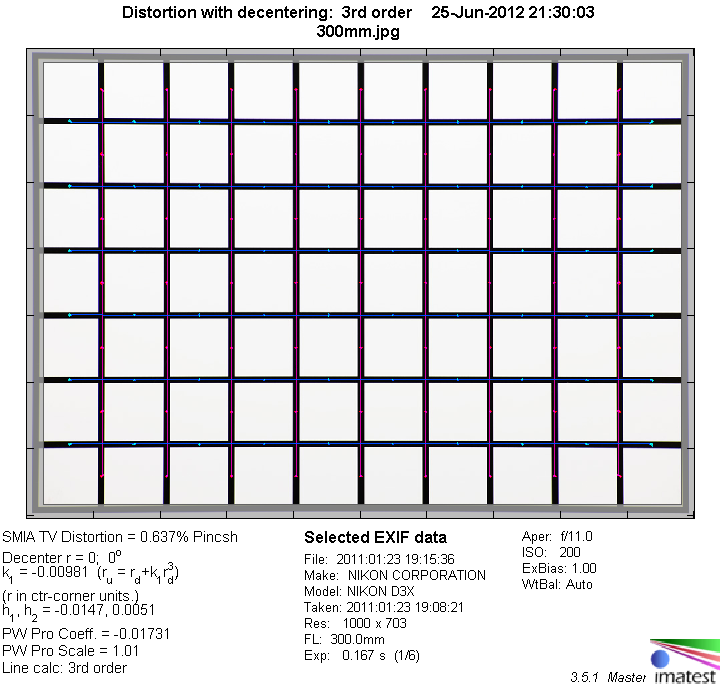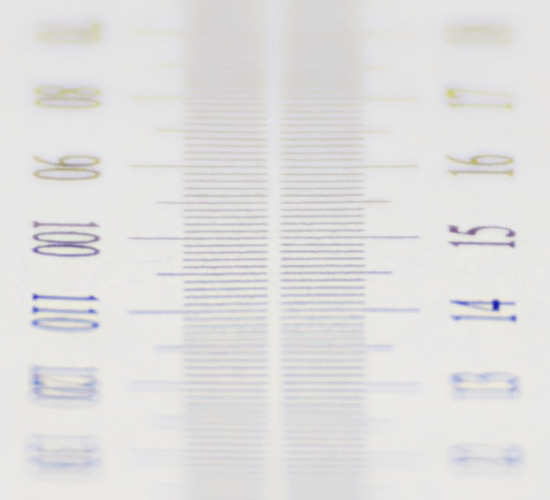|
Page 2 of 3

Distortion
The lens shows a small amount of pincushion distortion. This can be visible in images with straight lines near the image border. However, for most subjects this is not an issue.

The chart above has a real-world size of about 120x80cm.
Vignetting
Vignetting is moderate at the largest aperture setting. As usual, stopping down reduces the amount of light fall-off to lower levels that are hardly field-relevant anymore.
We're performing our vignetting analysis based on
(uncorrected) JPEGs straight from the camera. The JPG engine of the Nikon D3x features a rather flat
gradation curve, thus has a moderate contrast characteristic, resulting in comparatively low vignetting figures - the
corresponding Canon figures are roughly 40% higher due to the more
aggressive default contrast setting.

MTF (resolution)
The lens shows nicely uniform resolution at all tested apertures, delivering very good sharpness from the center down to the exteme corners.
Please note that the MTF results are not directly comparable across the different systems!
Below is a simplified summary of the formal findings. The chart shows line widths
per picture height (LW/PH) which can be taken as a measure for sharpness.
If you want to know more about the MTF50 figures you may check out the corresponding
Imatest Explanations

Chromatic Aberrations (CAs)
Chromatic aberrations (color shadows at harsh contrast transitions) are moderate wide open, but increase to higher levels by stopping down. This might be visible in very large prints (or crops). However, CAs can easily be corrected in software or by the camera itself (most modern Nikon DSLRs remove CAs themselves if you shoot JPGs).

Bokeh
One of the primary usage scenarios for a large aperture or long lens is to separate the main subject from the background. In such an image the quality of the bokeh (out-of-focus blur) is of major significance.
In front of the focal plane the image blur is somewhat nervous. However, in the more important area behind the point of focus the lens delivers quite smooth bokeh.
Background highlights are cut-off due to mechanical vignetting towards the image borders. They do show only a small amount of outlining at the largest aperture setting, which is a little more pronounced when stopped down. In addition, highlights suffer from bokeh fringing (see next section).

Bokeh Fringing
Bokeh fringing is a common issue with relatively fast glass. It's visible as halos of different colors in out-of-focus areas.
Being only a moderately fast lens, the Tokina shows a surprisingly high amount of bokeh fringing at the largest aperture setting. As usual, stopping down significantly reduces the issue.
|
Move the mouse cursor over the f-stop marks below to observe the respective LoCAs
|
| f/4.0 |
f/5.6 |
f/8.0 |
f/11 |
|

|
|